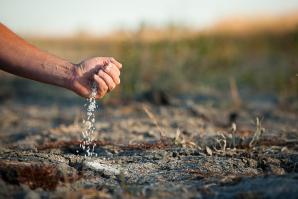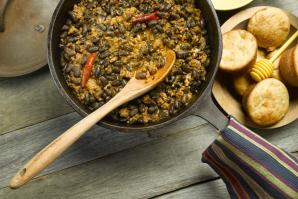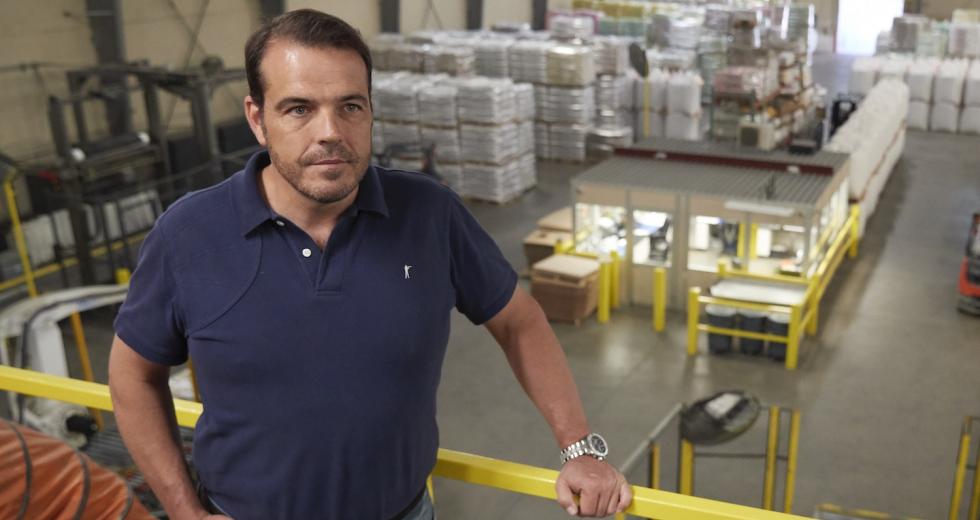Ken LaGrande was with his family in London in early July when he received the blockbuster news. His global rice team was at an industry event in China when it finally sealed a deal LaGrande and his Sun Valley Rice business had been negotiating for nearly 15 years — China agreed to import his California rice. It was the first time China reached a deal with an American rice farmer, opening up the California rice market to the No. 1 consumer of rice in the world.
“Our strongest … potential customer said ‘We’re ready.’ And we said, ‘We’re ready.’ And we struck a deal. It was as simple as that. After almost 15 years, it came down to they were ready,” says LaGrande, CEO of Sun Valley Rice, founder of LaGrande Family Foods Group and a fifth-generation rice farmer in the Sacramento Valley. “I reacted by buying dinner and a couple of extra bottles of wine.”
It was the latest and most significant development for California’s $5 billion rice industry that employs 25,000. Rice is one of the state’s most diversified crops, producing all the sushi rice used in the U.S.; all the rice used to brew Budweiser at Anheuser-Busch’s Fairfield plant; carbohydrates for pet food; grains for Kellogg’s, General Mills and Quaker Oats cereals; ingredients for sake brewing; and poultry beds for Foster Farms.
“There’s definitely something for use for everything that comes out of those rice fields,” says Chris Crutchfield, president and CEO of American Commodity Company, which operates a rice mill and packaging plant in Williams. The company delivers to customers in the U.S. and around the world, including Turkey and parts of Asia.
“California rice is largely viewed, certainly around North America but around the world as well, as some of if not the highest quality of rice,” Crutchfield says.
Get this and other stories delivered to your inbox weekly: Sign up for our free email newsletter by clicking or tapping here.
Tim Johnson, president and CEO of the California Rice Commission, an organization of 2,500 rice farmers, agrees. Buyers know the product has met the U.S.’s strict regulations involving water quality, pesticide management and safety standards at mills that process the grain.
Ninety-five percent of California’s 550,000-plus acres is in the Sacramento Valley, in Sacramento, Placer, Yolo, Sutter, Yuba, Glenn, Butte and Colusa counties, according to the commission. Conditions are perfect. Hard clay soil provides a basin for the 5 inches of water required for rice to grow; crystal-clear water from the Sierra Nevada that flows into the Sacramento River helps it thrive; and the region’s Mediterranean climate of hot, dry summers helps the grains to grow.
The average American eats 25 pounds of rice a year, compared to Asian countries, where people eat 100 pounds a year, according to Johnson. Half of the rice grown in California goes to the U.S. and Canada; the other half is exported to Japan — the largest importer of California rice with 25 percent of the market — and 30 other countries, including South Korea, Taiwan and Jordan. Now China, the largest consumer of rice in the world, joins that group.
From Fields to Sacks
Rice was introduced to California during the gold rush, when Chinese immigrants arrived as laborers. Attempts to grow it in Los Angeles and Sonoma counties proved futile, but then farmers discovered it could be grown in the Sacramento Valley. The state’s commercial rice industry began in Biggs in Butte County in 1912, when U.S. Department of Agriculture soil specialist W.W. Mackie discovered medium-grain rice grew well in the hard soil. Rice fields now provide a lush green landscape across the valley during growing season and provide a home to 5 million birds, including ducks and geese, and 230 other wildlife species.
Generations of rice farmers continue to tend to family crops. On a sunny summer morning, Sean Doherty, a fifth-generation farmer and owner of Sean Doherty Farms in Dunnigan in Yolo County, drives his white Ford truck across the levees of his fields, inspecting his crop, passing clusters of songbirds, red-winged blackbirds and bitterns. He stops his truck to point to a flock of cinnamon teal ducks. “We get ospreys and eagles,” Doherty says. “I’ve canoed down the canal with my daughter, and we’ve seen beavers as big as Labradors, river otters, minks, all kinds of animals.”
Doherty and his brothers grew up on this ranch, working weekends in the fields and driving trucks at age 9. Now, in the spring, his crews plow and level the fields, making furrows for the 175 pounds of seed they plant per acre. Warehouse workers soak the rice seeds for 24 hours until they germinate, making them heavy enough to sink to the bottom when crop duster airplanes drop the seeds in 5 inches of water. Once planted, the rice is checked twice a day to make sure water levels don’t evaporate during the region’s hot summers. The rice grows 3 feet high with a golden crown of billowy kernels ready to be harvested in the fall. (Planting this year was delayed due to heavy rain in May.) Each acre yields 4 tons of rice.
“The rice comes up, and the grain gets heavy, and it tips over and the fields get golden,” Doherty says. “Then you drain the fields, heavy equipment cuts the rice and puts it into grain carts, fill it, and take it to the rice dryer facility.”
The next stop is the mill. Each day, about 40 trucks filled with rice come into Farmers’ Rice Cooperative in West Sacramento, a massive industrial complex in its 75th year. After the trucks are weighed, the rice is put through a giant dryer for two days to reduce moisture content. The next step is an intricate process that inspects the rice for damage, insects, rocks and dirt before it goes through separators. Brown rice has its outer hull removed, while white rice has the hull and second layer of bran removed (both come through the same plant). The white rice goes through two rollers that pop the hulls off, and a machine “polishes” the kernels to make them whiter. Machines remove shorter pieces, and faulty kernels are used for beer and pet food.
“It will go through an optical sorter, which believe it or not, every kernel is looked at by a camera, and if it sees a defect of a size and intensity that is unacceptable, there’s a little puff of air that will pop it out of the stream,” explains Joe Alves, director of milling at Farmers’ Rice Cooperative.
“We’re the largest producer of sushi rice, that short, medium rice we find in sushi and Korean cuisine. We grow all the sushi rice in the United States. Whether you’re eating sushi in New York, Dallas or here in Sacramento, it’s all rice grown right here in the Sacramento Valley.” Tim Johnson, president and CEO, California Rice Commission
Once ready, the rice is packed in sacks ranging from 2 pounds to 1 ton, with labels in different languages for shipping all over the world. Noisy forklifts move across the massive factory floor, transporting the packaged rice to trucks that will take it to its next destination domestically or to the ports in Sacramento and Stockton to be shipped overseas.
Sushi and Beyond
The state’s rice industry has benefited greatly from the growing popularity of sushi throughout the world. According to Japan’s Ministry of Agriculture, Forestry and Fisheries, there were nearly 120,000 Japanese restaurants outside of Japan as of October 2017, a 30 percent increase from 2015 and five times more than its first study in 2006. And, according to the report, more than 25,000 of these restaurants are in North America.
“We’re the largest producer of sushi rice, that short, medium rice we find in sushi and Korean cuisine,” Johnson says. “We grow all the sushi rice in the United States. Whether you’re eating sushi in New York, Dallas or here in Sacramento, it’s all rice grown right here in the Sacramento Valley.”
Mikuni, a popular sushi restaurant with nine locations, is the largest user of California rice in the Sacramento region. The rice grown in the Sacramento Valley is a medium grain, sticky rice called Japonica, perfect for sushi and Asian dishes. Daniel Schmook, Mikuni’s executive chef, orders roughly 40,000 pounds a month, and the chain has a chef at each location whose sole job is to cook rice with its secret recipe. Batches are cooked 10 pounds at a time, with 20-30 batches each day, Schmook says. “It goes into everything,” he says. Mikuni also uses about 650 cases of rice bran oil, another rice by-product, each month.
Another big rice user in the Capital Region is Anheuser-Busch, the largest buyer in the U.S. One-third of California’s rice crop, mainly the broken or half pieces that are discarded from premium table rice, is used to brew beer, and Anheuser-Busch’s Fairfield plant uses 2.5 million pounds each month to make Budweiser and Bud Light, two of the three top-selling beers in the U.S., according to Anheuser-Busch spokeswoman Molly Drenkard. Rice helps provide a clean, crisp taste that has been part of Budweiser’s recipe since 1876, she says.
“All the rice they use at their brewery in Fairfield comes from California,” Crutchfield says. “They use a tremendous amount.”
Rice also is the main ingredient in sake. Gekkeikan Sake, founded in 1637 in Japan, chose Folsom for its only production facility in the U.S. in 1989 because of the clean water from the Sierra Nevada used in nearby rice fields. Its facility produces 1,400 bottles of sake a day and is open to tourists who can sip it in the tasting room surrounded by koi ponds. Koichi Murakami, vice president of marketing, says Gekkeikan Folsom uses 2,000 tons of California rice annually.
Crutchfield says rice also has other great “co-products,” meaning everything produced by the industry can be used for something. California rice is sold to pet food companies, including Mars, maker of Pedigree and Iams. Foster Farms is also a huge consumer, using discarded rice hulls for bedding for chickens and turkeys. And on the environmental side,
nutrient-rich fields after harvest attract migrating birds while scientists use flooded rice plains to build the salmon population.
A Huge New Market
China is the world’s largest producer of rice and also the world’s largest importer of rice. With a population of 1.4 billion people, most of whom eat rice as a daily staple, China depends on imports from other Asian countries, with 97 percent of rice imports coming from Vietnam, Thailand, Cambodia and Pakistan.
Gaining access to China opens more opportunity for California rice. LaGrande credits his nearly 15 years of unrelenting effort through three U.S. presidential administrations (George W. Bush, Barack Obama and Donald Trump) and the dozens of trips to China by his senior vice president of sales, Steve Vargas, to develop relationships with officials there. While other farmers and the rice commission held back during tariff talks between the U.S. and China, LaGrande and his team decided to push — and it paid off. The first shipment of Sun Valley Rice is expected to arrive at the Port of Shekou in Shenzhen, China, in October.
LaGrande says the tariff talks between the U.S. and China governments did not affect his deal. Any higher cost due to tariffs will be offset by the pricing of his California rice, he says.
“When they can buy rice or other food from the U.S., they are willing to pay a premium for the product,” LaGrande says.
However, as this issue of Comstock’s went to press, it remained unclear if the ongoing trade war would have a long-term affect on the potential growth of the China market for California rice.
“We’ve spent decades chasing this enormous market, and the Sun Valley Rice sale is the first ever of U.S. rice to a private importer,” Betsy Ward, president and CEO of USA Rice, an industry advocacy group, said in a news release. “It is truly historic and sets the stage for continued regular trade with China for U.S.-grown rice.”
LaGrande hopes developing the China market will give California farmers a higher return for the investment they’ve been making. “The crop we’re raising is not only high quality from a table point of view, (but from) a production point of view and sustainability,” LaGrande says. “My fellow rice millers who take rice to China can bring California rice farmers a higher return for those investments they’ve been making.”
—
Discuss this story and others on our Facebook page; “like” Comstock’s on Facebook by clicking or tapping here.
Recommended For You

Of Rice and Men
On the Cover: Parched by years of drought, thousands of California’s rice fields lie barren
In the Sacramento Valley, where 97 percent of the state’s rice crop is grown, family farmers have been forced to fallow cropland they have worked for generations. The economic hit has been hard and true, affecting not just farmers, but seed distributors, equipment dealers and anyone else with a thumb in the rice business. The drought could cost Central Valley farmers and communities $1.7 billion this year and may lead to more than 14,500 layoffs.

Back and Forward: Jack Crawford on Innovation in the Capital Region
Jack Crawford, general partner at Impact Venture Capital, offers his perspective into entrepreneurship and innovation in the Capital Region. For more from Crawford, check out “It’s Show Time!” in our April issue.

Seeds of Innovation
Important work happening in the Capital Region is transforming the future of vegetables
Eight of the world’s 10 largest vegetable seed companies are located near UC Davis, a world leader in plant science and agricultural research. The Capital Region is home to a vast ecosystem at the forefront of advancing food production — here’s how all the pieces come together.

The Comeback Legume
Chili Smith Family Foods in Carmichael capitalizes off renewed interest in heirloom beans
More than 40,000 varieties of beans exist worldwide, according to the U.S. Department of Agriculture, but only a small portion are commercially grown.



